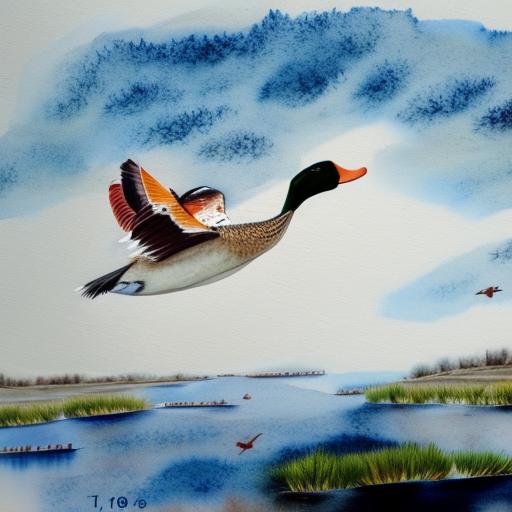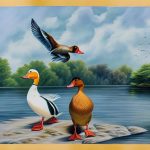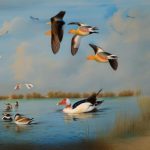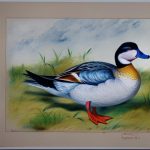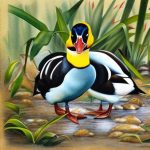Flying duck breeds are a unique and fascinating group of waterfowl that have captured the attention of bird enthusiasts and farmers alike. These breeds are known for their ability to fly long distances, making them a popular choice for hunters and conservationists. Flying duck breeds are also valued for their beautiful plumage and distinctive characteristics, making them a sought-after addition to any flock. Whether you are interested in raising ducks for agricultural purposes or simply enjoy observing these majestic birds in their natural habitat, flying duck breeds are a captivating and diverse group that is worth exploring.
Key Takeaways
- Flying duck breeds are known for their ability to fly long distances and are often used for hunting and conservation purposes.
- Characteristics of flying duck breeds include strong and agile flying abilities, streamlined bodies, and a variety of colorful plumage.
- Popular flying duck breeds include the Mallard, Pintail, and Teal, which are commonly found in North America and Europe.
- Flying duck breeds play a significant role in agriculture by helping to control insect populations and providing natural fertilizer for crops.
- Flying duck breeds can also make great pets for those with the space and resources to care for them properly.
- Conservation efforts for flying duck breeds are important to ensure their survival and maintain biodiversity in their natural habitats.
- In conclusion, the future of flying duck breeds relies on continued conservation efforts and responsible management to protect their populations and habitats.
Characteristics of Flying Duck Breeds
Flying duck breeds are known for their strong and agile flying abilities, which set them apart from other domestic duck breeds. These birds have a streamlined body shape, with long, powerful wings that enable them to soar through the air with ease. Their strong flight muscles and lightweight bones allow them to cover long distances in search of food and suitable nesting sites. In addition to their impressive flying abilities, flying duck breeds are also known for their striking plumage and unique markings. From the vibrant green head of the mallard to the iridescent feathers of the wood duck, these birds are a sight to behold. Their distinctive features and graceful flight make them a popular choice for birdwatchers and photographers.
Popular Flying Duck Breeds
There are several popular flying duck breeds that are well-known for their unique characteristics and flying abilities. The mallard duck is perhaps the most iconic of all flying duck breeds, with its striking green head and distinctive quacking call. Mallards are found throughout North America and Europe, and are a common sight in wetlands and marshes. Another popular flying duck breed is the wood duck, which is known for its stunning iridescent plumage and elaborate courtship displays. Wood ducks are native to North America and can be found in wooded swamps and freshwater marshes. Other popular flying duck breeds include the teal, pintail, and wigeon, each with its own unique features and behaviors.
Flying Duck Breeds in Agriculture
Flying duck breeds have long been valued for their contributions to agriculture, particularly in the realm of pest control and egg production. Ducks are natural foragers and are adept at consuming insects, snails, and other pests that can damage crops. Many farmers use flying duck breeds to help control pest populations in their fields, reducing the need for chemical pesticides. In addition to their pest control abilities, flying duck breeds are also valued for their egg production. Ducks are prolific layers, with some breeds producing up to 300 eggs per year. Their eggs are rich in nutrients and are used in a variety of culinary applications, making them a valuable commodity for farmers and consumers alike.
Flying Duck Breeds as Pets
In addition to their agricultural contributions, flying duck breeds are also popular as pets and companions. Many people enjoy keeping ducks as pets due to their friendly and sociable nature. Ducks are known for their gentle demeanor and can form strong bonds with their human caretakers. They also have unique personalities and can be quite entertaining to watch as they waddle around the yard or splash in a pond. Additionally, flying duck breeds are relatively low-maintenance pets, requiring only basic care and access to water for swimming and foraging. With proper housing and nutrition, ducks can live long and healthy lives as beloved members of the family.
Conservation Efforts for Flying Duck Breeds
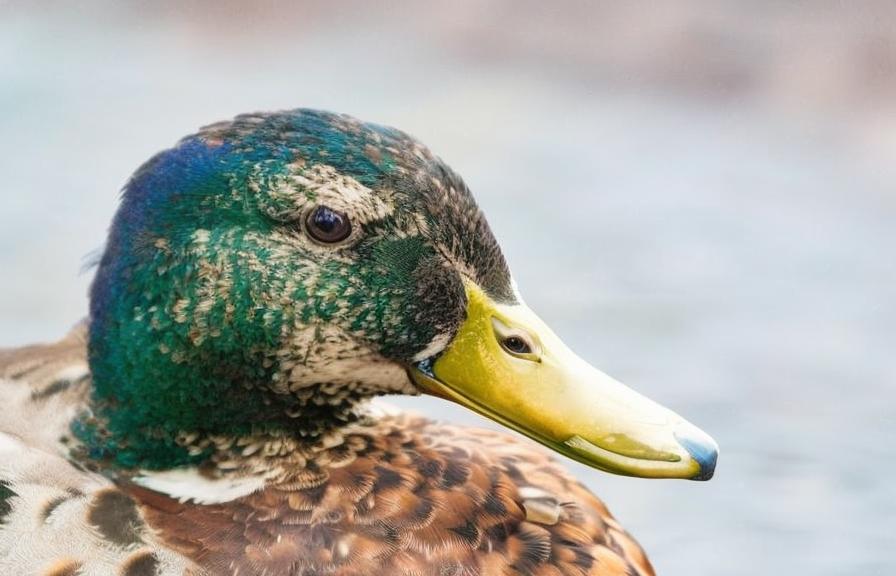
Despite their popularity, many flying duck breeds face threats to their survival in the wild. Habitat loss, pollution, and hunting pressure have all contributed to declining populations of some species. Conservation efforts are underway to protect and preserve these magnificent birds for future generations. Organizations such as Ducks Unlimited and the National Audubon Society work tirelessly to conserve wetland habitats and promote sustainable hunting practices. Captive breeding programs also play a crucial role in maintaining genetic diversity and ensuring the long-term survival of flying duck breeds. By raising awareness about the importance of conservation and supporting these efforts, we can help ensure that flying duck breeds continue to thrive in the wild.
Conclusion and Future of Flying Duck Breeds
In conclusion, flying duck breeds are a diverse and captivating group of waterfowl that have captured the hearts of bird enthusiasts and farmers around the world. From their impressive flying abilities to their striking plumage, these birds are a source of wonder and admiration. Whether they are used for agricultural purposes, kept as pets, or admired in their natural habitat, flying duck breeds play an important role in our lives and ecosystems. As we look to the future, it is crucial that we continue to support conservation efforts and sustainable practices to ensure the survival of these remarkable birds for generations to come. By working together, we can help protect and preserve flying duck breeds for the benefit of all.
If you’re interested in learning more about flying duck breeds, you might also want to check out this insightful article on the mating season for turkeys at PoultryWizard. Understanding the mating behaviors of turkeys can provide valuable insights into breeding and raising poultry.
FAQs
What are flying duck breeds?
Flying duck breeds are a group of duck species that are known for their strong flying abilities. These ducks are capable of long-distance flights and are often found in various habitats around the world.
What are some examples of flying duck breeds?
Some examples of flying duck breeds include the Mallard, Northern Pintail, Gadwall, and the Teal. These ducks are known for their migratory behavior and can be found in different parts of the world.
What are the characteristics of flying duck breeds?
Flying duck breeds are typically characterized by their streamlined bodies, strong wings, and agile flying abilities. They often have a pointed tail and are adapted for long-distance flights.
Where can flying duck breeds be found?
Flying duck breeds can be found in a variety of habitats, including wetlands, marshes, lakes, and rivers. They are often migratory and can be found in different parts of the world depending on the season.
What do flying duck breeds eat?
Flying duck breeds are omnivorous and feed on a variety of foods, including aquatic plants, insects, small fish, and crustaceans. They may also forage for food in agricultural fields and grasslands.
Meet Walter, the feathered-friend fanatic of Florida! Nestled in the sunshine state, Walter struts through life with his feathered companions, clucking his way to happiness. With a coop that’s fancier than a five-star hotel, he’s the Don Juan of the chicken world. When he’s not teaching his hens to do the cha-cha, you’ll find him in a heated debate with his prized rooster, Sir Clucks-a-Lot. Walter’s poultry passion is no yolk; he’s the sunny-side-up guy you never knew you needed in your flock of friends!

